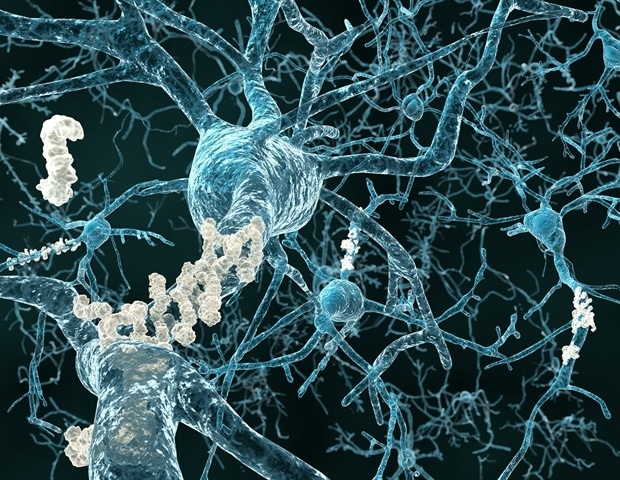For more than 30 years, researchers have identified and quantified genetic and lifestyle factors for Alzheimer’s Disease (AD) and other dementias. Despite extensive research, the fundamental mechanisms behind these neurodegenerative diseases are still not fully understood, and effective management of AD is taking longer than expected. There is a critical need for novel approaches to combat this longstanding disease. A special supplement celebrating the 100th volume of the Journal of Alzheimer’s Disease (JAD), published by IOS Press (now part of Sage), provides a unique and insightful overview of the state of the art in the field.
Aging is associated with a gradual decline in cellular stability, leading to a decrease in overall health. In the brain, this process is closely linked with an increased risk of neurodegenerative diseases, including AD. Understanding the mechanisms of brain aging is crucial for developing strategies aimed at enhancing both lifespan and health span. Recent advancements in geroscience, the study of the relationship between aging and age-related diseases, have begun to redefine our understanding of AD, guiding the development of preventive medical strategies that target the aging process itself rather than merely addressing the symptomatic manifestations of the disease.
An editorial by Virginia Boccardi, MD, PhD, Department of Medicine and Surgery, Division of Gerontology and Geriatrics, University of Perugia, Italy, and colleagues, presents the following modifiable lifestyle interventions that might influence the disease’s progression or mitigate its risk factors:
- Healthy diet: A nutritious diet is crucial for maintaining brain health
- Regular exercise: Particularly aerobic activities like brisk walking for forty minutes three times a week
- Social engagement: Prolonged social isolation can worsen neurological health and increase the risk of dementia
- Quality sleep: Disruptions in sleep patterns can increase brain proteins linked to AD
- Stress management: Chronic stress is associated with an increased risk of cognitive impairment
- Mental Stimulation: Keeping the brain active helps build cognitive reserves and strengthens neural connections
While lifestyle prevention holds promise for reducing the risk of dementia, the practical challenges of achieving and sustaining behavior change, especially among high-risk populations, cannot be overlooked.”
Virginia Boccardi, Department of Medicine and Surgery, Division of Gerontology and Geriatrics, University of Perugia
“For more than 30 years, researchers have identified and quantified genetic and lifestyle factors for AD and other dementias,” adds William B. Grant, PhD, Sunlight, Nutrition, and Health Research Center, San Francisco, CA, USA, in a literature review. “Genetics plays an important role in the risk of AD. However, many lifestyle choices also play a part. It might be said that genetics loads the gun and lifestyle/nutrition pulls the trigger.”
The supplement also focuses on other approaches to achieve AD risk reduction and prevention. In Improving Cognition Without Clearing Amyloid: Effects of Tau and Ultrasound Neuromodulation, Jürgen Götz, PhD, Clem Jones Centre for Ageing Dementia Research (CJCADR), Queensland Brain Institute (QBI), The University of Queensland, Brisbane, QLD, Australia, and colleagues, detail the use of neuromodulation to improve neuronal connectivity and activate plasticity as well as other mechanisms that mediate resilience and neural compensation.
The article Enhanced Brain Clearance of Tau and Amyloid-β in Alzheimer’s Disease Patients by Transcranial Radiofrequency Wave Treatment: A Central Role of Vascular Endothelial Growth Factor (VEGF), by Gary W. Arendash, PhD, RF Longevity, Phoenix, AZ, USA, and NeuroEM Therapeutics, Inc., Tampa, FL, USA, et al., presents findings from the first clinical study that evaluates the cytokine VEGF on brain clearance of tau and amyloid-β (Aβ) in human subjects, providing evidence for transcranial radiofrequency wave treatment as a new and non-invasive therapeutic that “clinically” modulates VEGF levels in and around meningeal lymphatic vessels, thus impacting their flow and ensuing removal of toxins such as Aβ and tau from the brain.
The supplement also focuses on AD assessment, genetic coding, environmental factors, symptoms, disease progression, treatment and clinical trials, early detection using recently developed approaches like biomarkers, and patient wellbeing and outcomes.
Commenting on the publication of the 100th volume of JAD, George Perry, PhD, Semmes Foundation Distinguished University Chair in Neurobiology, The University of Texas at San Antonio, TX, and Editor-in-Chief of JAD, says, “When my esteemed colleague Dr. Mark Smith and I founded JAD, we thought it essential to have a journal that embraced diversity of novel ideas rather than starting with dogmatic views. The dream of a journal focused on a community, committed to changing the course of AD, has been maintained for nearly 30 years by embracing and enhancing new ideas, engaging authorship and readership from the global AD community, and fostering careers in AD research.”
“IOS Press is extremely proud to be part of JAD’s notable achievement, publication of 100 volumes of this highly regarded and influential journal devoted exclusively to AD. This impressive milestone could not have been achieved without the vision and dedication of founding Editors-in-Chief Dr. George Perry and Dr. Mark Smith and the support of current Co-Editor-in-Chief Dr. Paula Moreira and the entire Editorial Board,” commented Rasjel van der Holst, Publisher at IOS Press.
Source:
Source link : News-Medica

